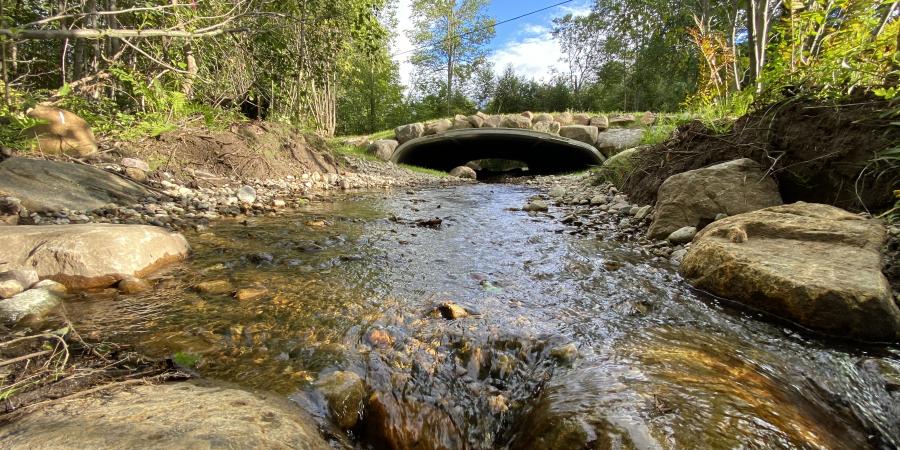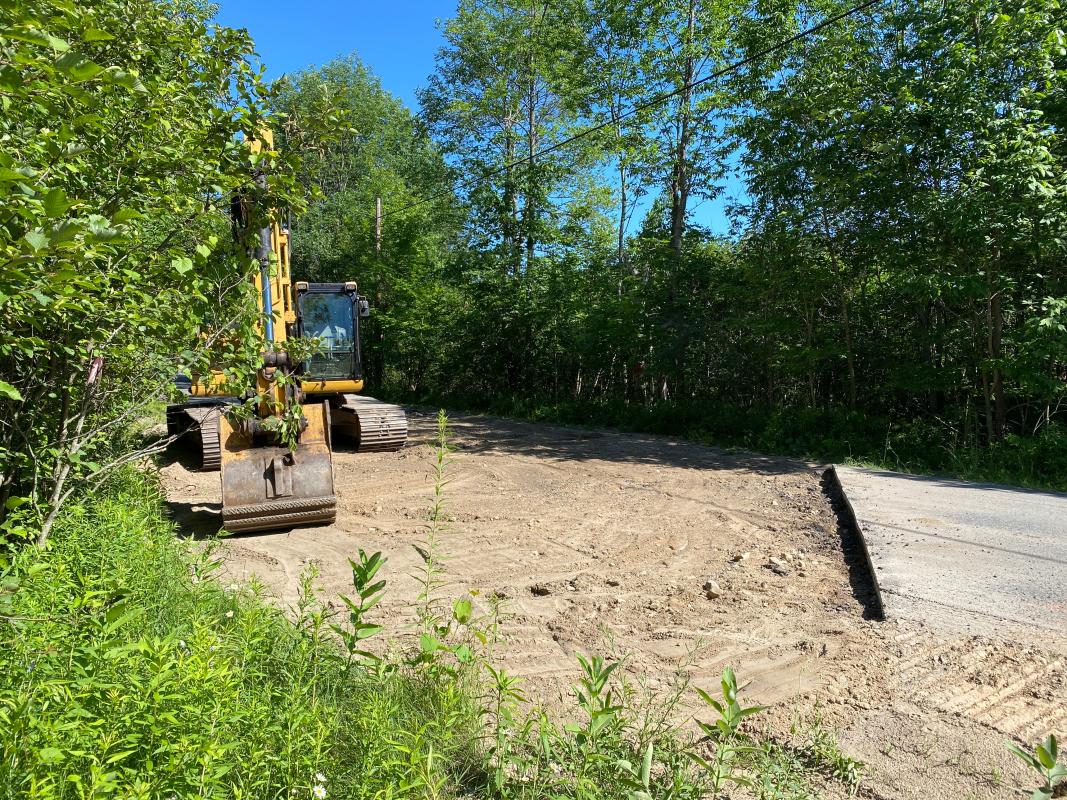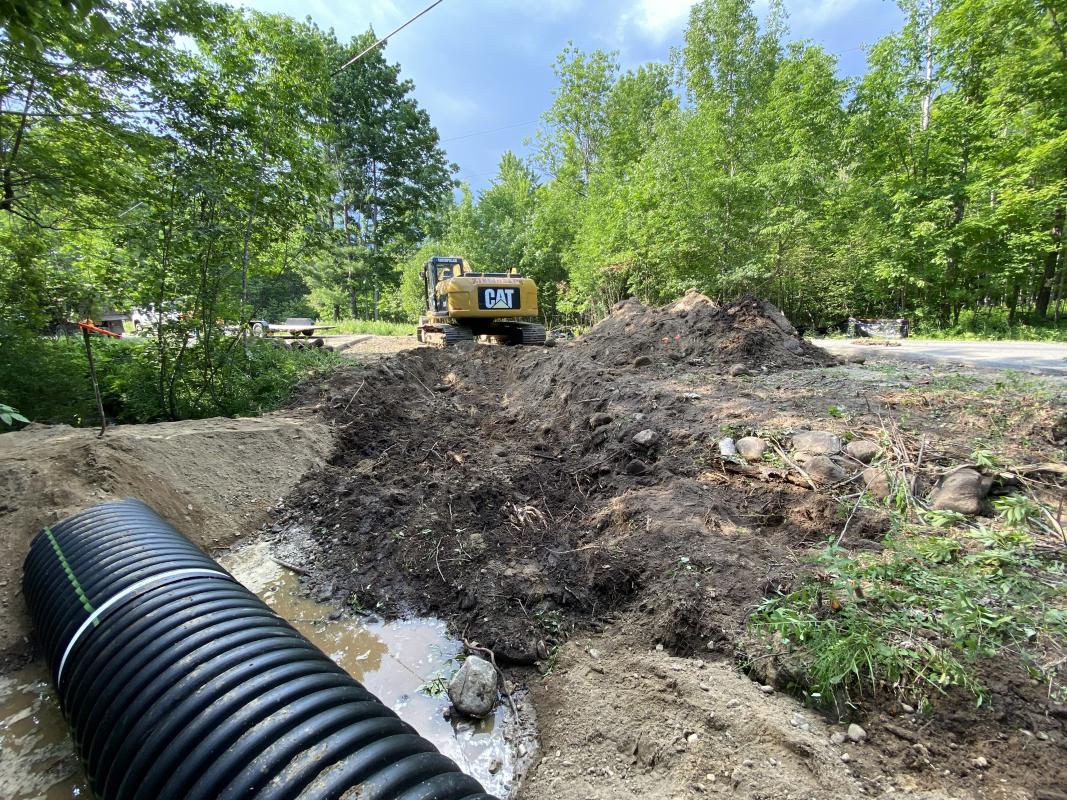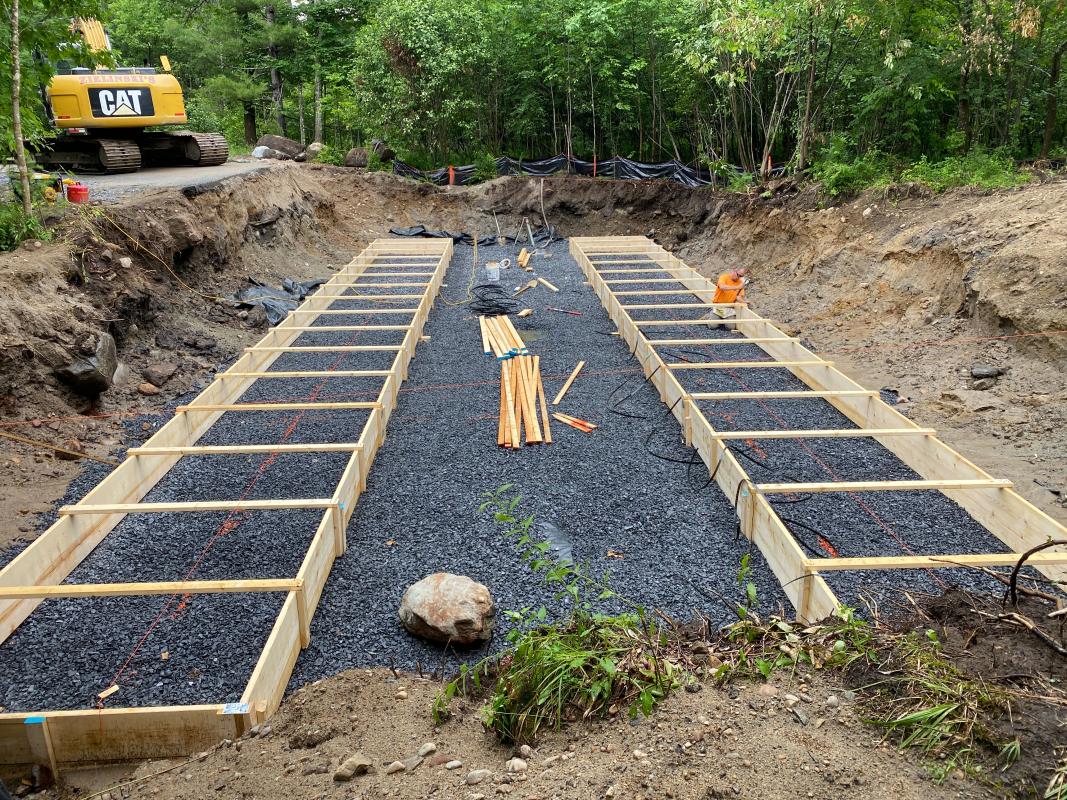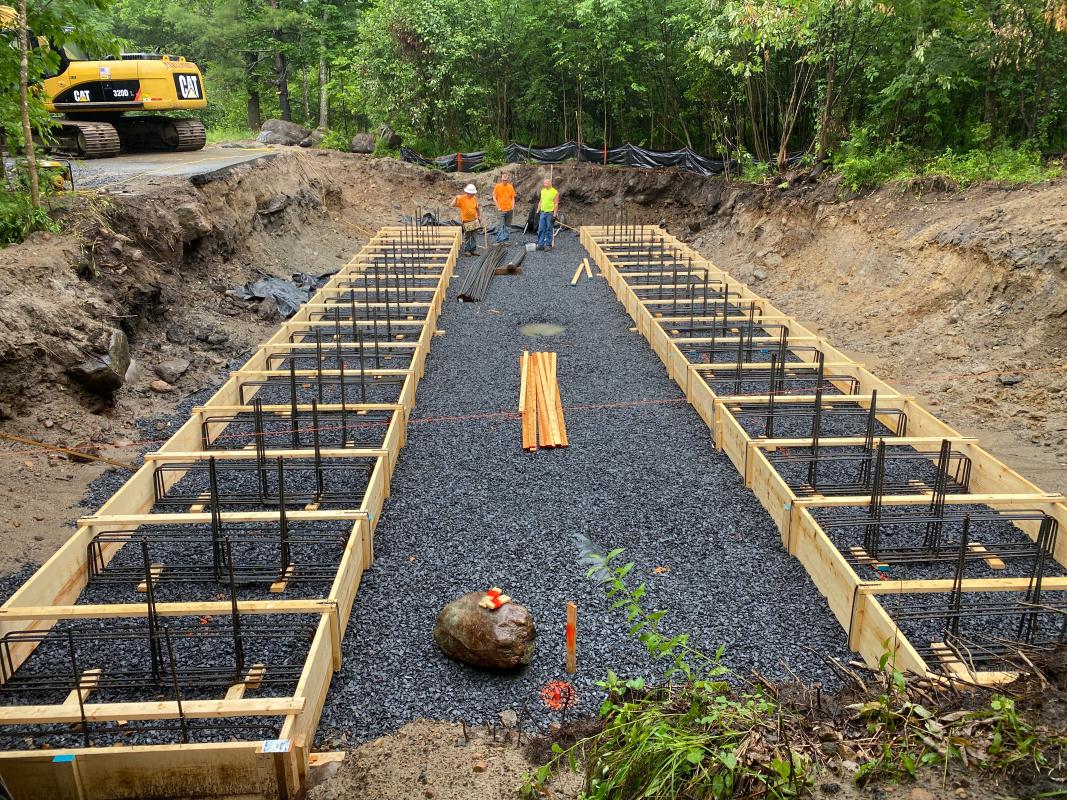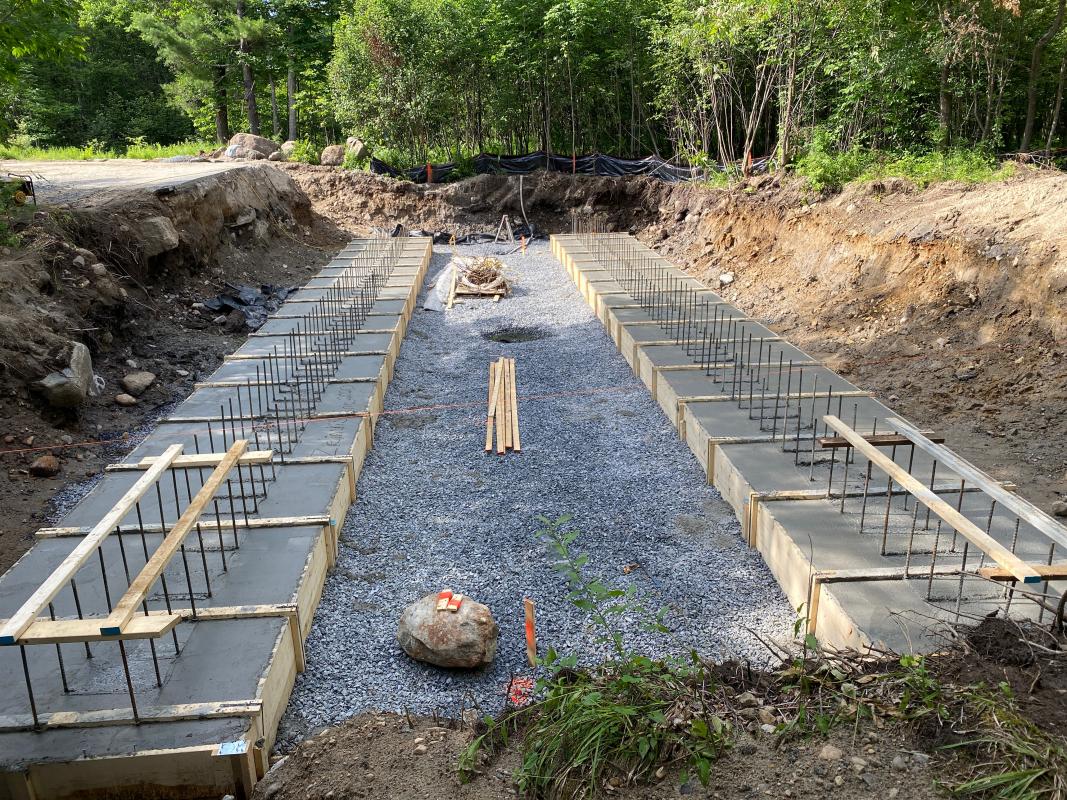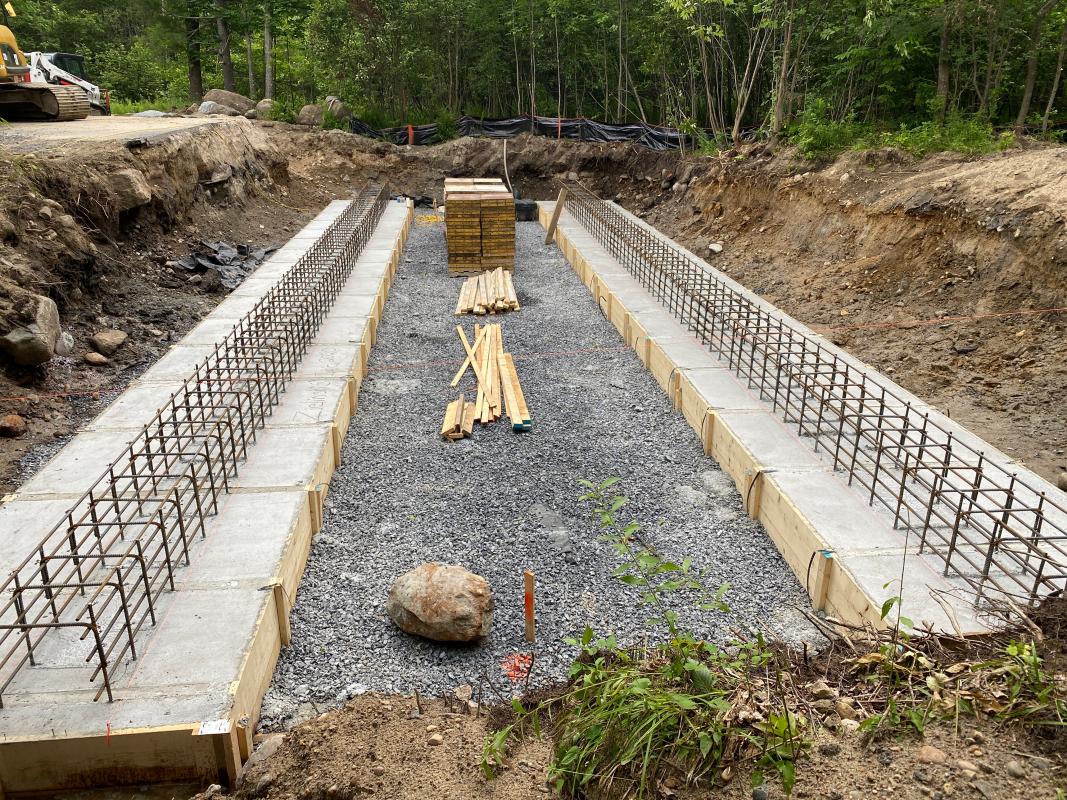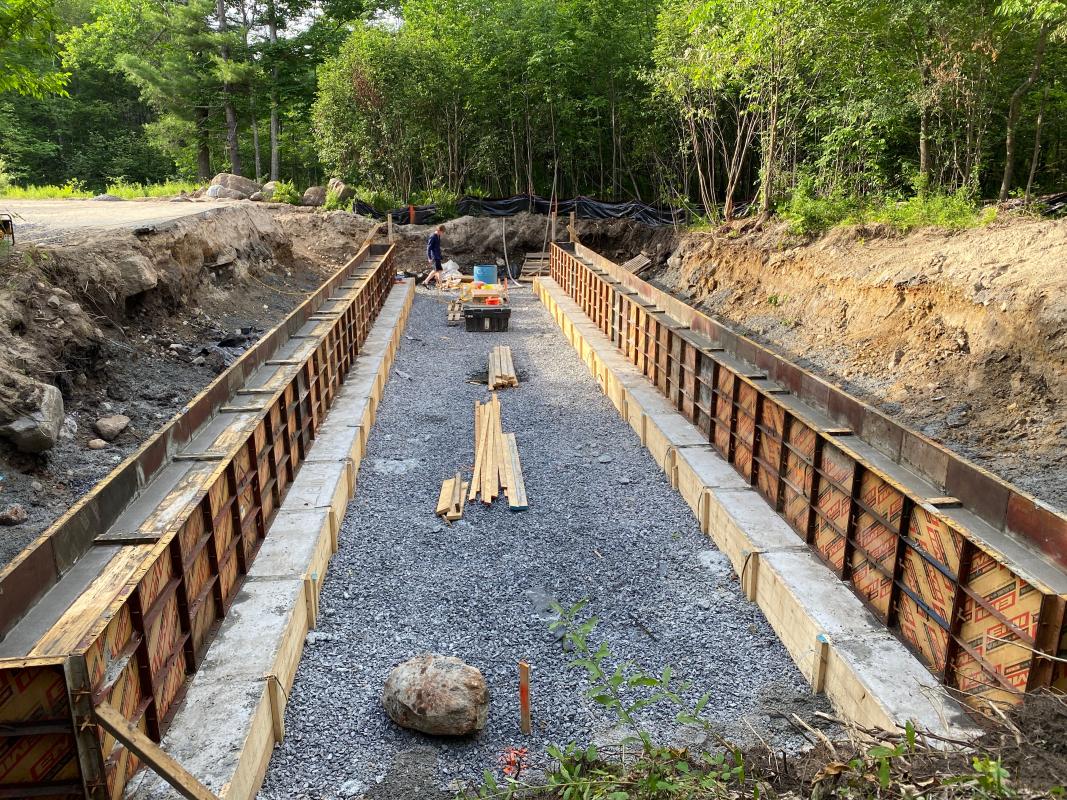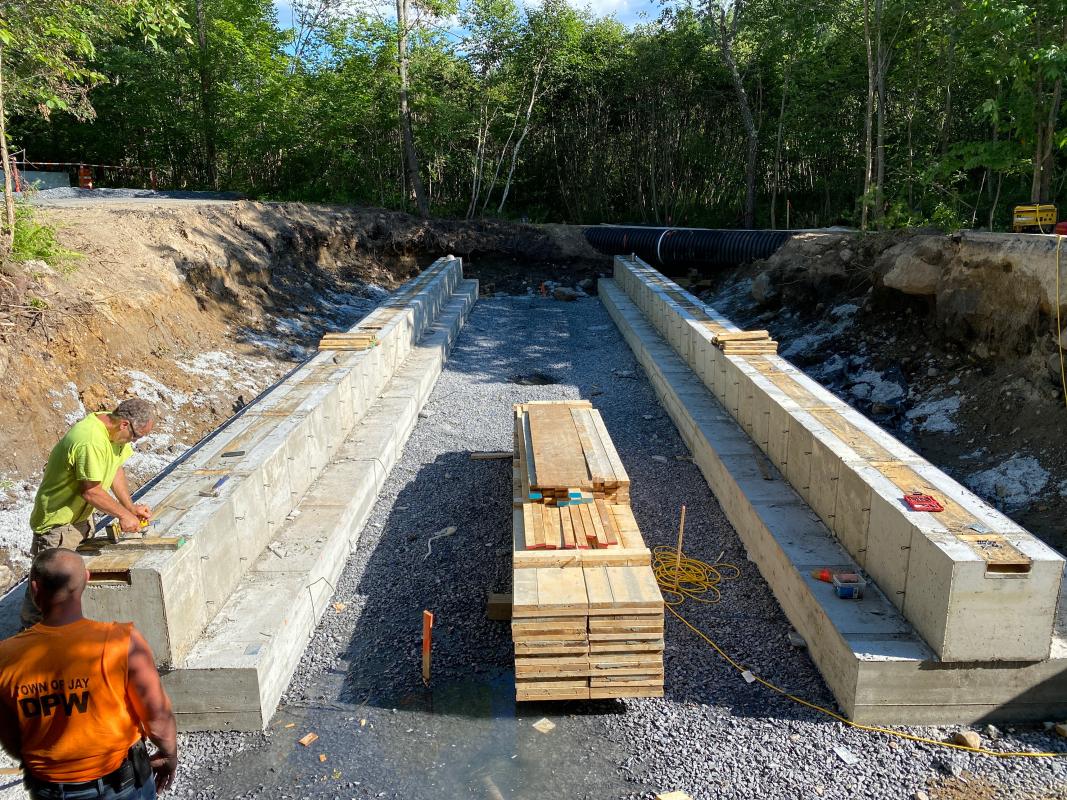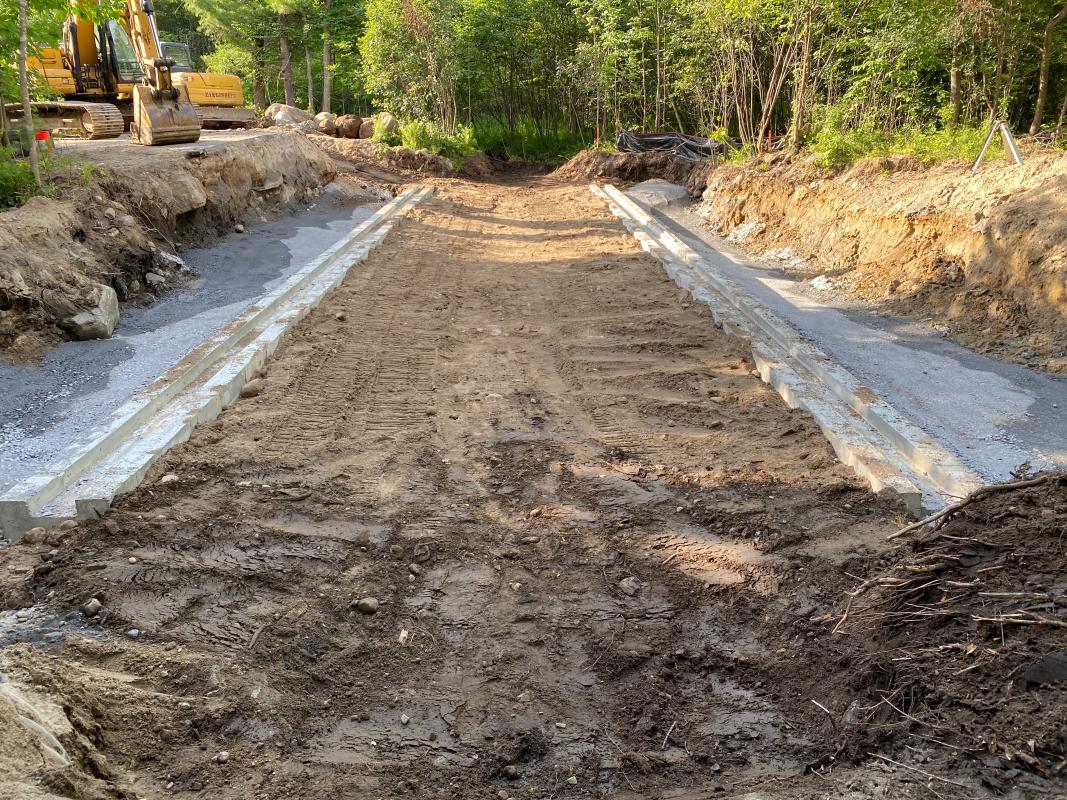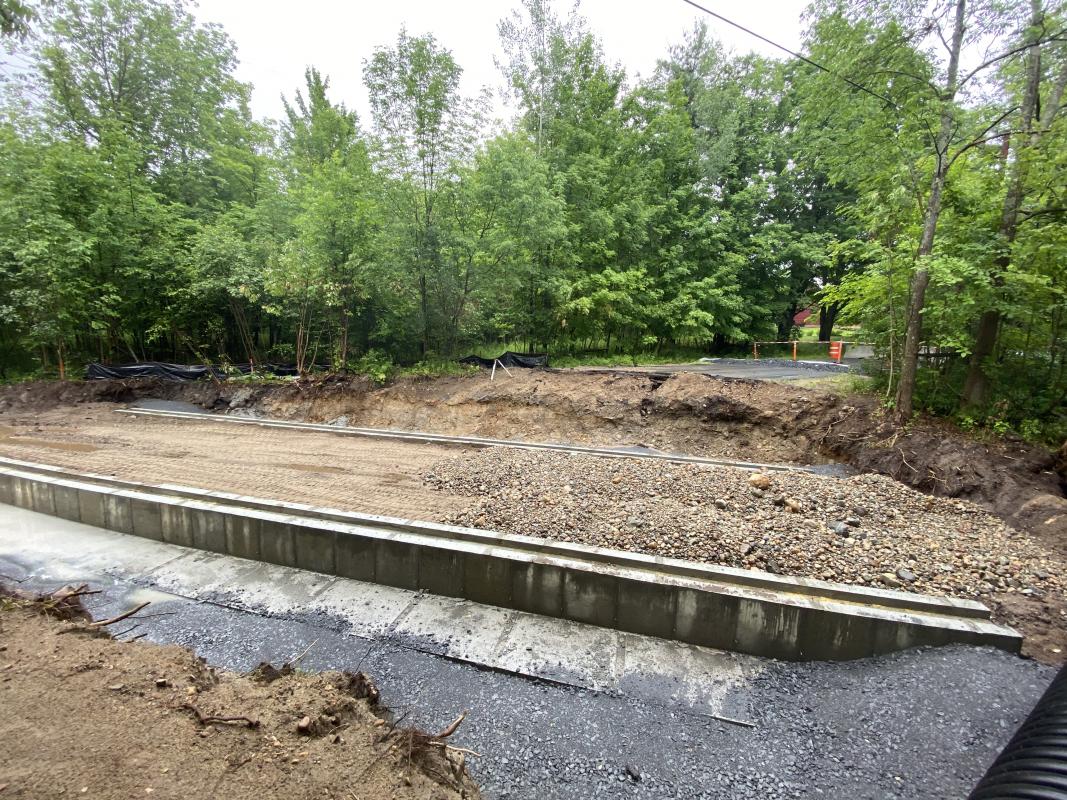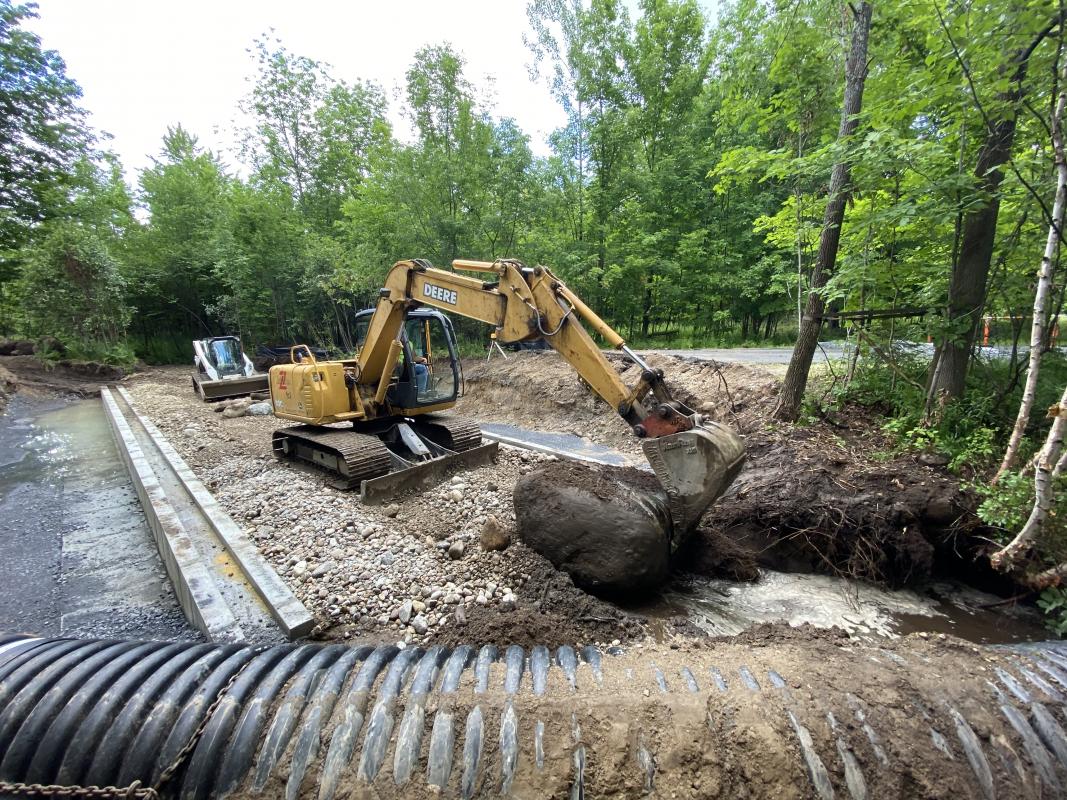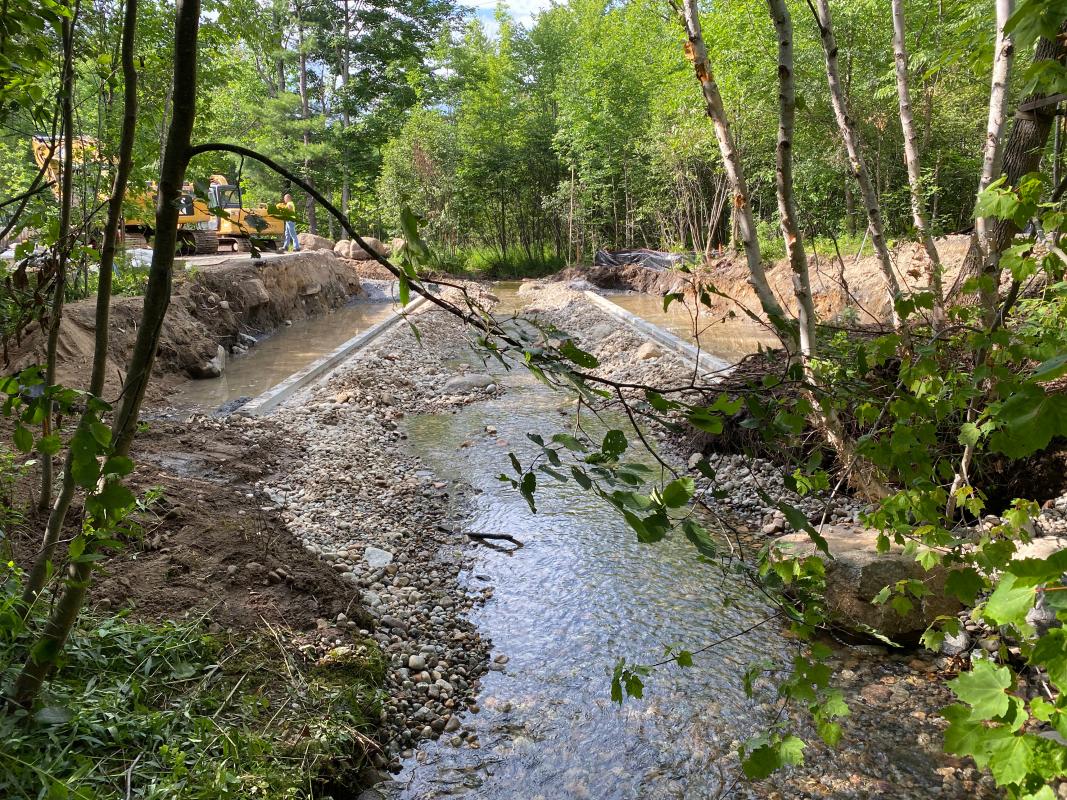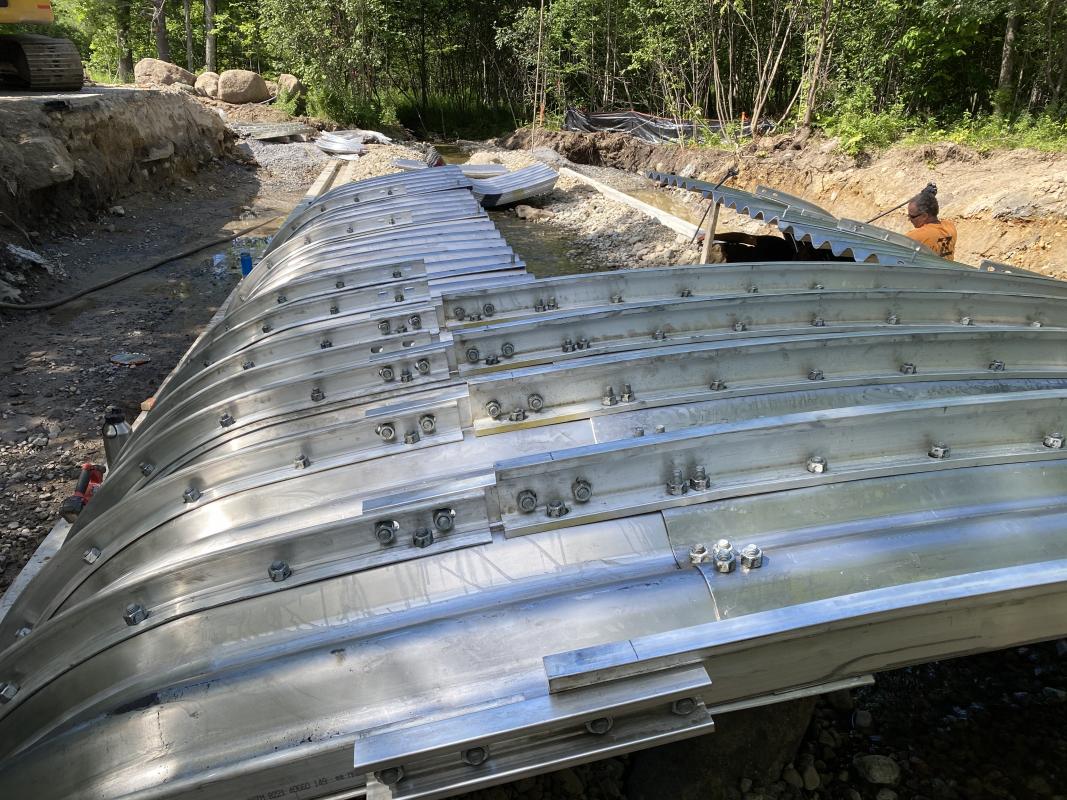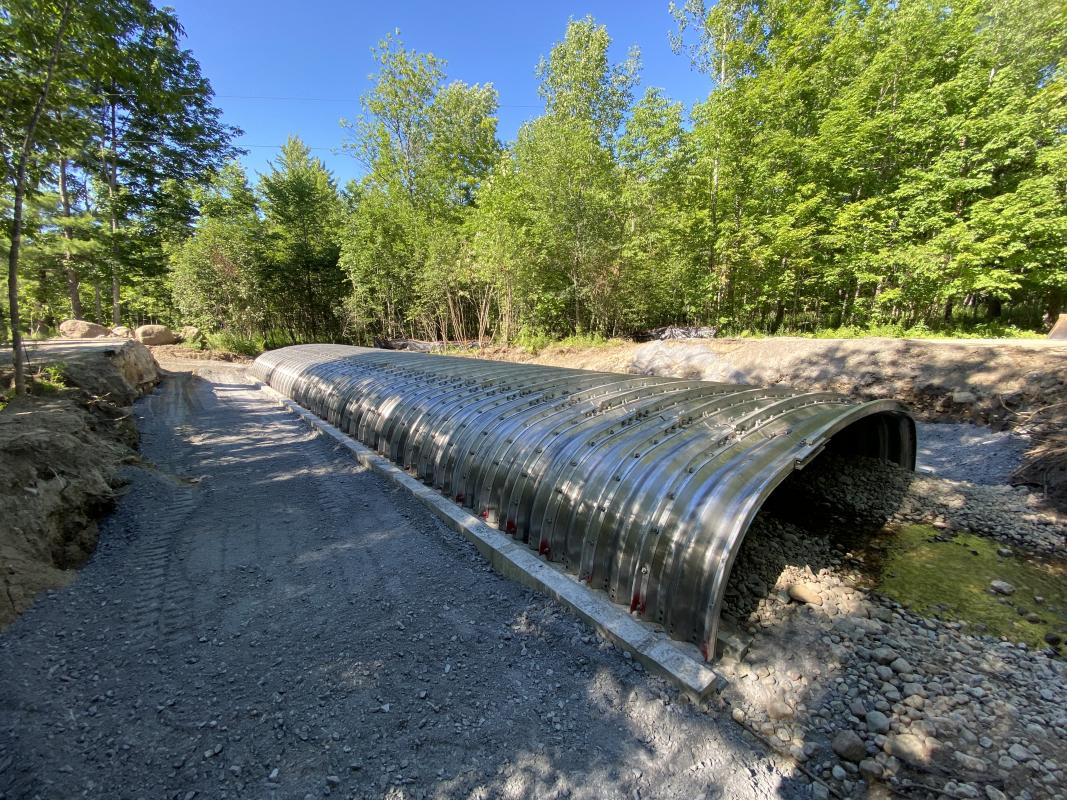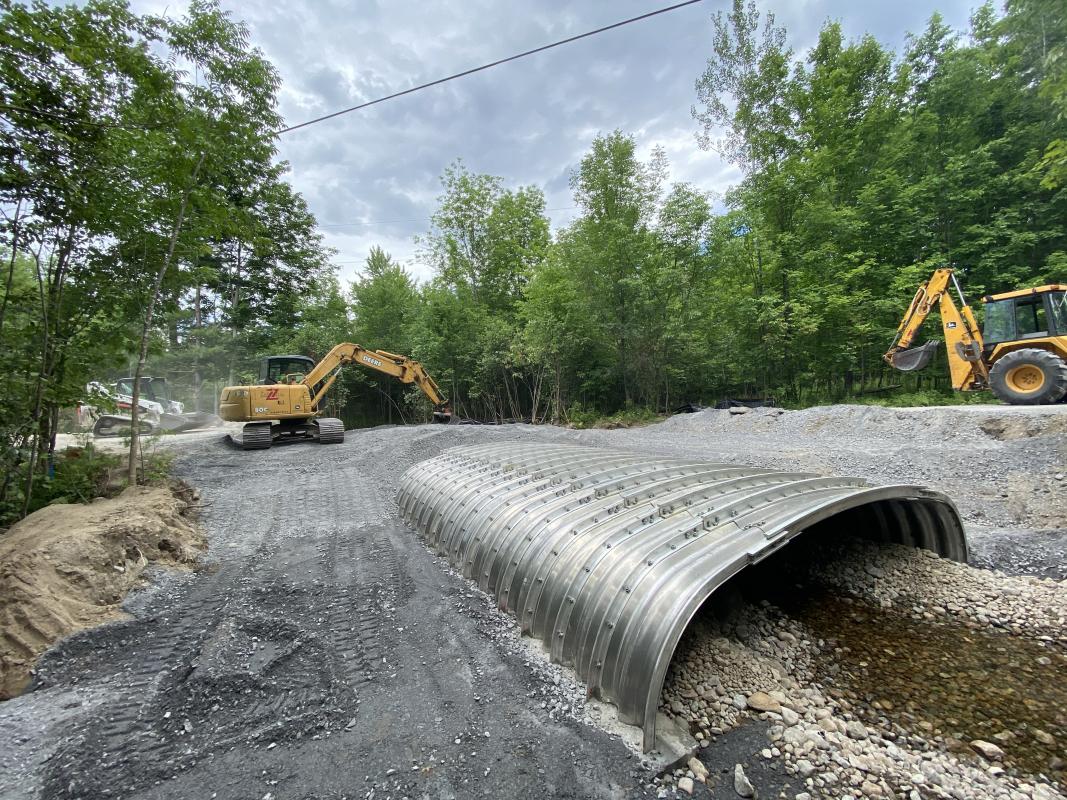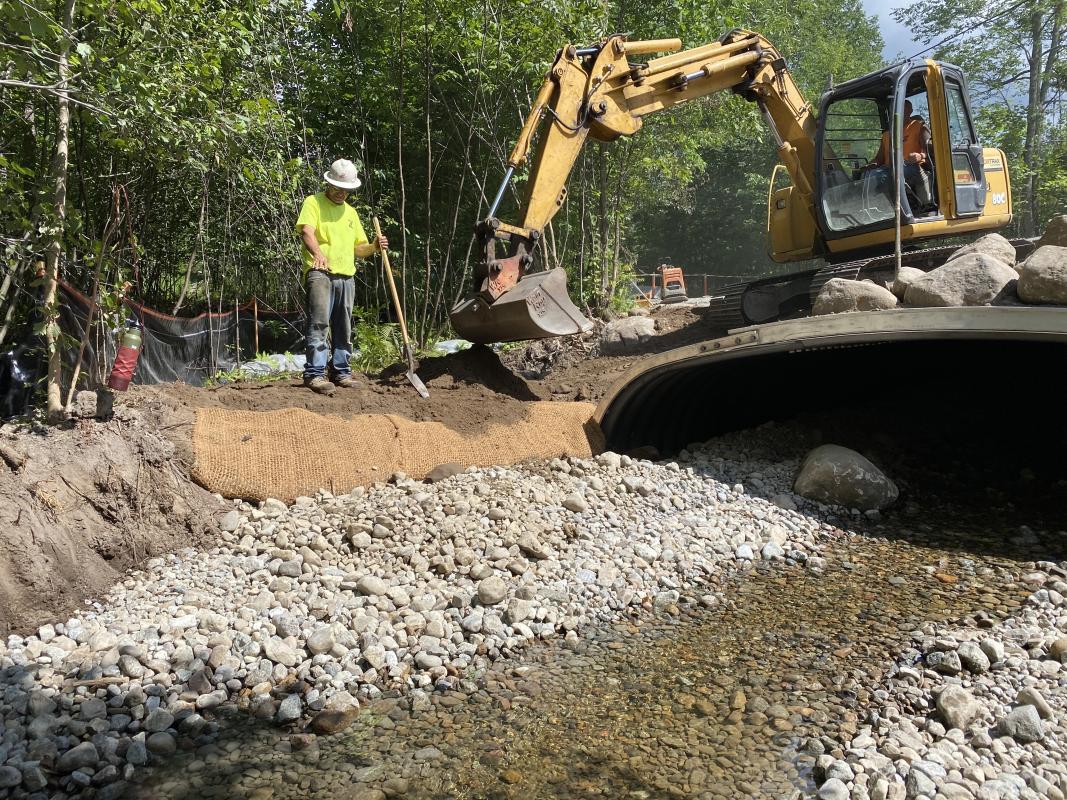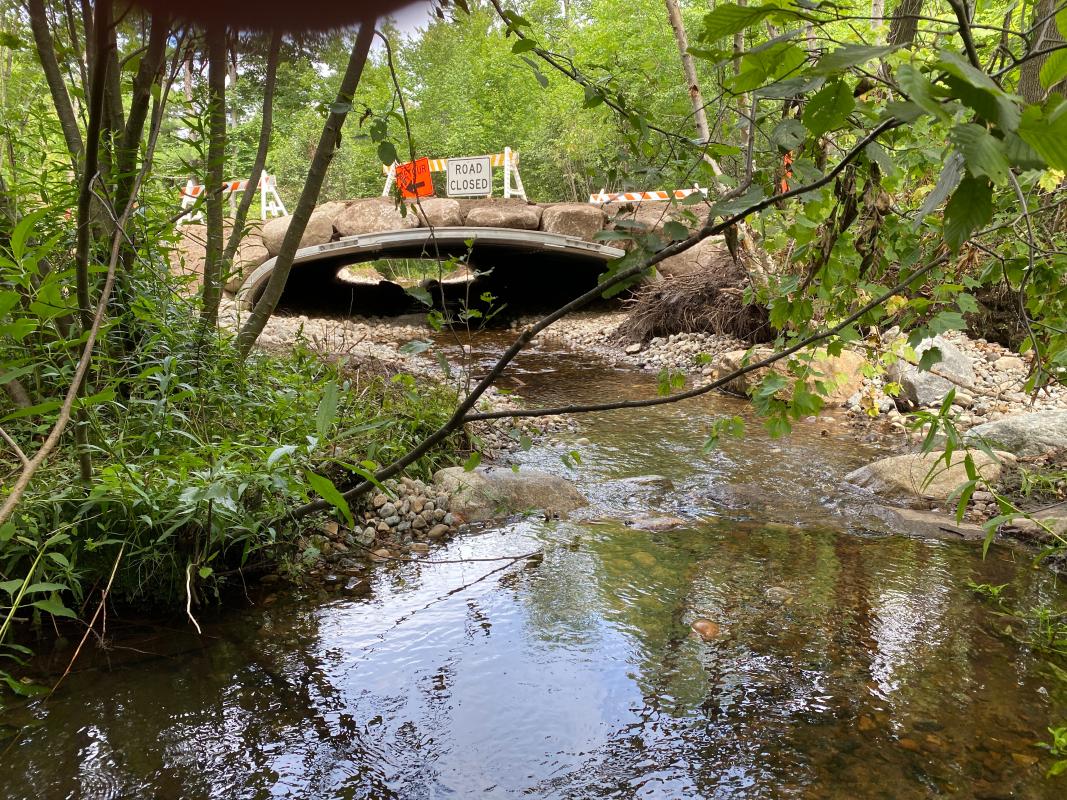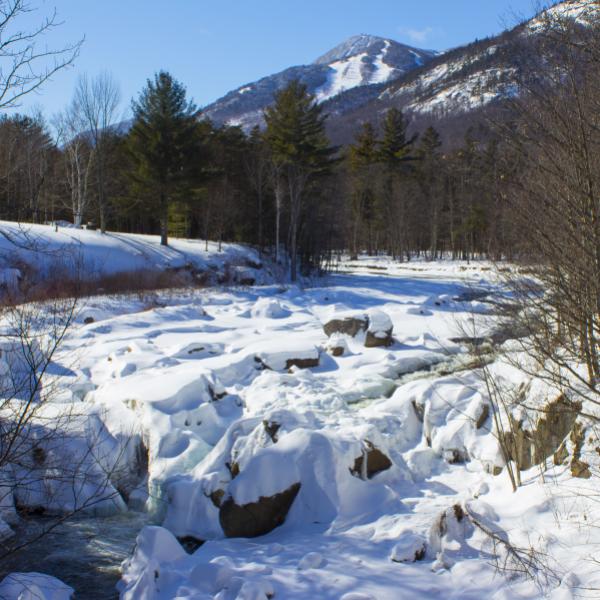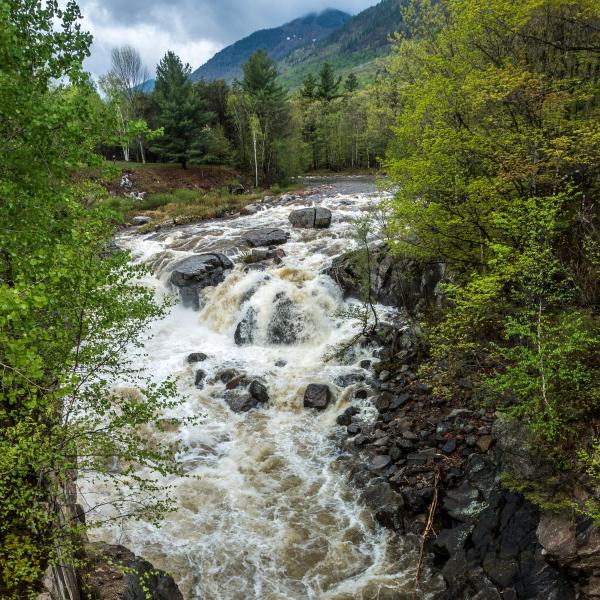Ever wondered what it takes to build a culvert that is flood-resilient, fish-friendly, and gives new life to a stream? The practical answer is planning, surveys, design, engineering, permitting, thoughtful construction, native materials and plants, and the engagement of stakeholders. The secret sauce, however, is in the intention: creating an intersection between a stream and a road that preserves the form and function of the stream. Letting nature continue to take its course, in this case, reduces maintenance, keeps property safe, and keeps roads open in storms.
This August, the Ausable River Association and our partners completed construction of our longest Climate Ready Culvert to date – one of two major culvert projects this summer. It was not our goal to build a long culvert, but instead to restore the original path of Otis Brook at its second crossing with Jay Mountain Road in the Town of Jay.
Decades ago, perhaps when this section of Jay Mountain Road was paved, road crews decided to reroute Otis Brook. The natural path of the road crossed the brook on a sharp diagonal. Keeping this sharp angle would have required a long pipe and every few years cutting open a large section of road to replace it. Instead, the stream was rerouted to run alongside the road for 100 feet then forced to turn a sharp right and run through a 40" pipe under the road. While convenient for maintenance and less expensive in terms of pipe length, the route blocked the stream from efficiently moving water, sediment, and materials. Over the years, sediment aggraded upstream of the pipe, creating a muddy section of stream devoid of habitat. Higher flows backed up behind the undersized pipe allowing water to overflow onto the road. Downstream, at the outlet, the undersized pipe created a large scour hole, eroding the stream's banks and bed with every hard rain. The drop from the pipe outlet to the water surface below blocked fish and other organisms from moving upstream.
Shifting the stream back to its original path, restoring the former streambed, and installing a 16-foot wide open-bottom aluminum arch at the appropriate slope restored stream health, fish passage, road safety and will reduce long-term maintenance costs for the Town. It also creates a beautiful, habitat rich stream that runs free.
Click through the photo gallery below to see the Otis Brook 2 culvert being built.
Climate Ready Culverts cost roughly $100,000 to $175,000 dollars. They last for at least 75 years. Smaller streams crossing roads with lighter traffic loads may be able to use smaller arches, lowering costs. We're working with our partners to design and test quicker, less costly alternatives. Stay tuned.
View all of our climate-ready culvert projects by clicking here.
Project partners: Ausable River Association, U.S. Fish and Wildlife Service, The Nature Conservancy, Adirondack Chapter, Town of Jay.
Project funders: Lake Champlain Basin Program, NEIWPCC, NYSDEC Water Quality Improvement Program, Town of Jay, Ausable River Association supporters.
Story by Kelley Tucker, Executive Director
Sign-up for our e-newsletter to get weekly updates on the latest stories from the Ausable River Association.
